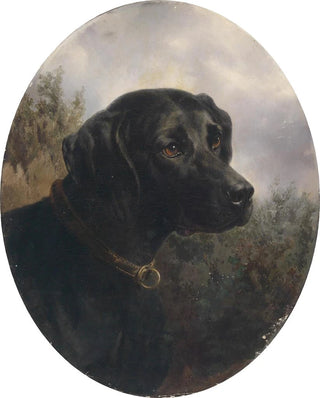Art print | Hector - Carl Reichert Source: Reproduction | Hector - Carl Reichert


View from behind

Frame (optional)
In the rich and complex universe of art history, some works manage to capture the very essence of humanity through poignant and evocative representations. "Hector" by Carl Reichert is one of those creations that transcend the simple frame of painting to become a true ode to the beauty and tragedy of human existence. This artwork, inspired by the heroic character from Greek mythology, embodies both bravery and vulnerability, offering the viewer an immersion into a timeless narrative. By examining this piece, one discovers not only the technical mastery of the artist but also the deep emotions he manages to convey through his brushstrokes.
Style and uniqueness of the work
Carl Reichert's style is distinguished by meticulous attention to detail and a color palette that evokes a range of emotions. In "Hector," the artist succeeds in creating an atmosphere that is both majestic and melancholic. The drapery of Hector's tunic, rendered with striking precision, almost seems to come alive before the viewer's eyes. Light plays a crucial role in this composition, highlighting the hero's features while creating shadows that enhance the depth of his expression. The way Reichert captures Hector's gaze, both determined and tinged with sadness, reflects an intimate understanding of human psychology. This artwork is not merely a simple representation; it invites reflection on fate and sacrifice, universal themes that resonate across ages.
The artist and his influence
Carl Reichert, an Austrian painter of the 19th century, established himself as a major figure of the academic movement. His rigorous training and penchant for historical and mythological subjects allowed him to develop a unique style that combines realism and romanticism. Influenced by the masters of classical painting, Reichert was able to incorporate contemporary elements into his work, offering a new perspective on ancient stories. His technical approach, characterized by detailed rendering of textures and expressions, inspired many artists of his time and continues to influence subsequent generations. Through "Hector," he manages to

Matte finish

View from behind

Frame (optional)
In the rich and complex universe of art history, some works manage to capture the very essence of humanity through poignant and evocative representations. "Hector" by Carl Reichert is one of those creations that transcend the simple frame of painting to become a true ode to the beauty and tragedy of human existence. This artwork, inspired by the heroic character from Greek mythology, embodies both bravery and vulnerability, offering the viewer an immersion into a timeless narrative. By examining this piece, one discovers not only the technical mastery of the artist but also the deep emotions he manages to convey through his brushstrokes.
Style and uniqueness of the work
Carl Reichert's style is distinguished by meticulous attention to detail and a color palette that evokes a range of emotions. In "Hector," the artist succeeds in creating an atmosphere that is both majestic and melancholic. The drapery of Hector's tunic, rendered with striking precision, almost seems to come alive before the viewer's eyes. Light plays a crucial role in this composition, highlighting the hero's features while creating shadows that enhance the depth of his expression. The way Reichert captures Hector's gaze, both determined and tinged with sadness, reflects an intimate understanding of human psychology. This artwork is not merely a simple representation; it invites reflection on fate and sacrifice, universal themes that resonate across ages.
The artist and his influence
Carl Reichert, an Austrian painter of the 19th century, established himself as a major figure of the academic movement. His rigorous training and penchant for historical and mythological subjects allowed him to develop a unique style that combines realism and romanticism. Influenced by the masters of classical painting, Reichert was able to incorporate contemporary elements into his work, offering a new perspective on ancient stories. His technical approach, characterized by detailed rendering of textures and expressions, inspired many artists of his time and continues to influence subsequent generations. Through "Hector," he manages to






